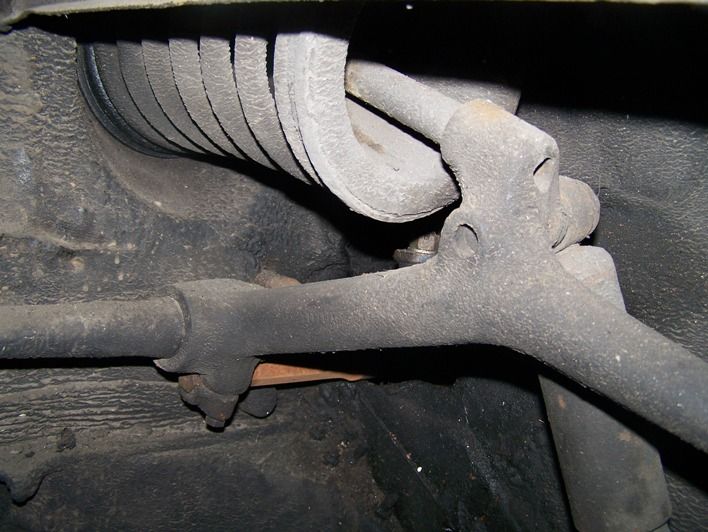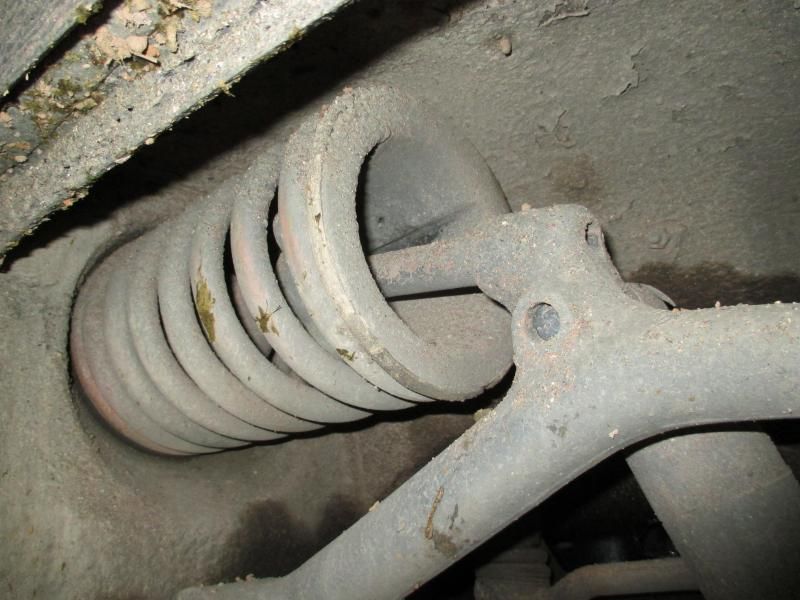302Rover
Member
Hello all,
recently I changed the front springs in my Rover 2000TC (now a 5000TC thanks to the Ford small block V8). I fitted stiffer springs from a 3500 along with a new, stiffer anti roll bar that I had machined at a local shop. While the car now seems to handle better, there is an annoying problem that remains to be solved. Namely, the top of the front coil is nearly touching the under side of the 'domed' portion of the inner wing. The springs are not absolutely straight, rather they are pitched up a little bit at the front, thus causing the interference with the sheet metal. When I drive the car at highway speeds, there is a lot of thumping and bumping noise going on. Inspection of the sheet metal in the vicinity of the area revealed that there is, indeed, contact.
The springs appear to be properly seated in the cups, both front and rear and centered nicely at the firewall end of the spring. But, as I said earlier, the springs are bowed up, not straight. For reference I am using the very nice set of photos provided in the post about changing out the front springs. These photos are showing straight springs with at least 1/4 inch or more clearance between the top of the front coil and the sheet metal. I have about 0.030 static clearance and clearly interference under dynamic conditions.
So I am wondering what is going on here. The extra weight on the front end isn't all that much more than the original Rover motor/gearbox, maybe no more than 100 lbs and that would be 50 lbs per spring. The spring rate is about 175 lb/in compared to the original springs at about 150 lb/in.
Before I take the drastic step of cutting out the sheet metal and reforming domes to give more clearance, I would really like to find the root cause of the problem. Any help would be greatly appreciated.
Cheers,
Tom
recently I changed the front springs in my Rover 2000TC (now a 5000TC thanks to the Ford small block V8). I fitted stiffer springs from a 3500 along with a new, stiffer anti roll bar that I had machined at a local shop. While the car now seems to handle better, there is an annoying problem that remains to be solved. Namely, the top of the front coil is nearly touching the under side of the 'domed' portion of the inner wing. The springs are not absolutely straight, rather they are pitched up a little bit at the front, thus causing the interference with the sheet metal. When I drive the car at highway speeds, there is a lot of thumping and bumping noise going on. Inspection of the sheet metal in the vicinity of the area revealed that there is, indeed, contact.
The springs appear to be properly seated in the cups, both front and rear and centered nicely at the firewall end of the spring. But, as I said earlier, the springs are bowed up, not straight. For reference I am using the very nice set of photos provided in the post about changing out the front springs. These photos are showing straight springs with at least 1/4 inch or more clearance between the top of the front coil and the sheet metal. I have about 0.030 static clearance and clearly interference under dynamic conditions.
So I am wondering what is going on here. The extra weight on the front end isn't all that much more than the original Rover motor/gearbox, maybe no more than 100 lbs and that would be 50 lbs per spring. The spring rate is about 175 lb/in compared to the original springs at about 150 lb/in.
Before I take the drastic step of cutting out the sheet metal and reforming domes to give more clearance, I would really like to find the root cause of the problem. Any help would be greatly appreciated.
Cheers,
Tom







